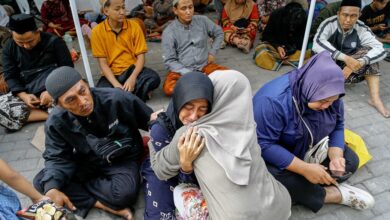A huge increase in arms imports by Southeast Asian countries in the past five years could threaten the region’s stability, a Swedish-based research institute said on Monday.
The Stockholm International Peace Research Institute (SIPRI) said in its annual report on Monday that arms imports by Indonesia, Singapore and Malaysia had leapt by 84 percent, 146 percent and 722 percent respectively between 2005 and 2009, compared with the previous five years.
"The current wave of Southeast Asian acquisitions could destabilize the region, jeopardizing decades of peace," Siemon Wezeman, SIPRI’s Asia expert, said in the report.
Singapore, Malaysia and Indonesia this month stepped up sea patrols in the Strait of Malacca, an important shipping lane, after Singapore’s navy said it had received indications a terrorist group was planning attacks on oil tankers.
The increase in purchases of long-range combat aircraft and warships by the three countries had influenced the procurement plans of neighboring states, the think tank said.
Last year, Vietnam became the latest Southeast Asian country to order long-range combat aircraft and submarines. Singapore is the first member of the Association of Southeast Asian Nations since the end of the Vietnam war to be included among SIPRI’s top ten arms importers.
The Swedish institute, which conducts independent research on international security, armaments and disarmament, said global arms transfers during the five-year period rose 22 percent, with Asia and Oceania the biggest recipients with 41 percent of the total.
Europe followed with 24 percent, then the Middle East with 17 percent.
The United States remained the world’s largest exporter of military equipment, accounting for 30 percent of overseas arms sales during the period. Almost 40 percent of US deliveries went to Asia and Oceania and a similar proportion to the Middle East.




